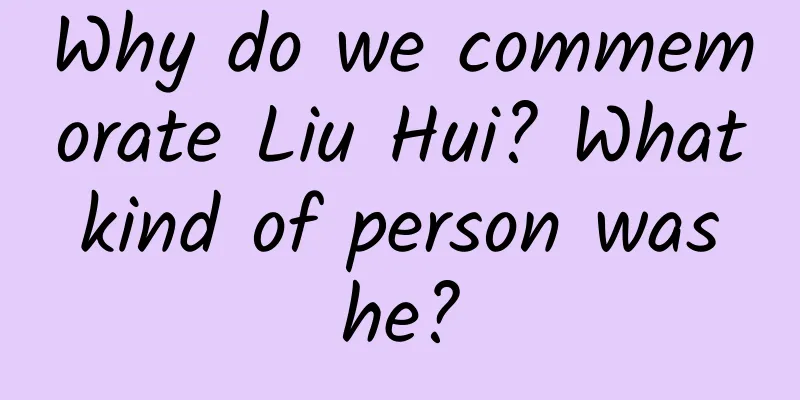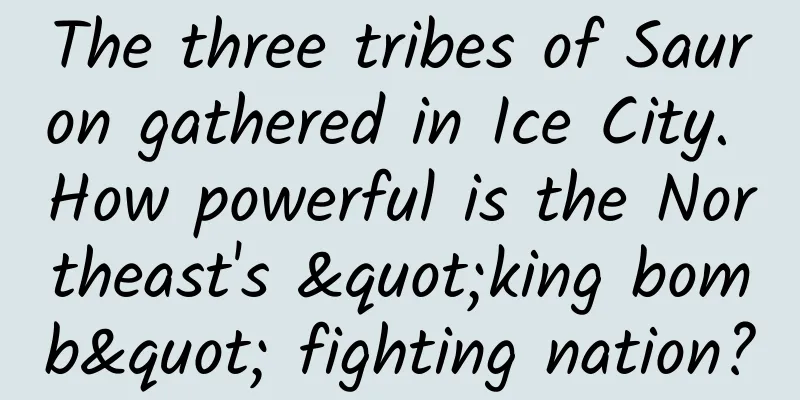Why do we commemorate Liu Hui? What kind of person was he?

|
On September 24, 2024, in Paris, France, the UNESCO headquarters launched a global commemoration of Chinese mathematician Liu Hui. As part of this event, relevant commemorations were also carried out in China, calling Liu Hui the founder of ancient Chinese mathematical theory. "Nine Chapters on Liu Hui: Liu Hui, the Main Founder of Chinese Classical Mathematical Theory" Special Exhibition As one of the most important mathematicians in ancient China, Liu Hui annotated all the methods in the Nine Chapters on the Mathematical Art and proved the correctness of its algorithms. He also wrote the "Difference" based on the astronomical table and shadow measurement to make up for the deficiencies of the Pythagorean chapter in the Nine Chapters on the Mathematical Art (later named "Sea Island Mathematical Classic"), and his achievements were outstanding. Mathematical historian Mr. Guo Shuchun praised him as "the master of mathematics in the ancient world". However, since there is no biography in the official history, the academic community has always talked more about Liu Hui's mathematical achievements and scientific spirit, but less about his life. So, what was Liu Hui's life like? Why is there so little record of him despite his important position? How does this relate to his achievements and character? This article attempts to further outline his life story based on existing research and using existing materials. Life of Liu Hui Liu Hui lived during the Cao Wei period of the Three Kingdoms. His birth and death dates are unknown. The only thing we know is that he annotated the Nine Chapters on the Mathematical Art in the fourth year of Wei Jingyuan (263 AD). In the "Mathematical Sacrifice Ceremony" promulgated by the Song court in the third year of Daguan (1109), there is a record of "Liu Hui of Wei, a man from Zibo Township". Based on this, Mr. Yan Dunjie (1917-1988), a modern scholar, first speculated that Liu Hui was from Zibo Township, Shandong Province. On this basis, Guo Shuchun further speculated that Zibo Township was in Zouping County, Shandong Province today, and that Liu Hui was a descendant of Zibo Township Marquis, the fifth-generation grandson of Liu Wu, the King of Liang Xiao, the son of Emperor Wen of Han, Liu Heng. Judging from the existing materials and various indirect evidence, this speculation is reasonable. Liu Hui's preface to his commentary on the Nine Chapters on the Mathematical Art states that "Hui studied the Nine Chapters when he was young, and read it in detail when he grew up." This shows that he had been studying the ancient Chinese mathematical classic, the Nine Chapters on the Mathematical Art, since he was a child. Liu Hui's preface states that "Duke Zhou established rituals and had nine numbers, and the Nine Chapters on the Mathematical Art is the source of the nine numbers." This means that he believed that the Nine Chapters on the Mathematical Art evolved from the nine numbers of the Zhou Dynasty (i.e., the "nine numbers" in the Zhou Li). This view is completely consistent with Zheng Xuan's commentary on the Zhou Li, which shows that Liu Hui really followed Zheng Xuan's theory, and the Confucian classics and Zheng Xuan's commentary were also textbooks for Liu Hui to study. According to the research of scholars such as Guo Shuchun and Zhou Hanguang, Liu Hui's annotations explicitly quoted Mozi and Kaogongji, and indirectly quoted pre-Qin works such as Zhouyi, Zhouli, Laozi, Zhuangzi, Xunzi, Guanzi, etc. He also quoted Han Dynasty works such as Huainanzi and Lunheng, which shows that he was very well-read. Moreover, the words and reasoning patterns used in Liu Hui's annotations are highly similar to those of Ji Kang (224-263), one of the Seven Sages of the Bamboo Grove, He Yan (?-249), Wang Bi (226-249) and other famous scholars of the Wei and Jin Dynasties, which shows that he was deeply influenced by the debate on metaphysics in the Wei and Jin Dynasties. If we take into account Liu Hui's extremely high mathematical achievements, we can infer that he is actually a famous scholar like Ji, He, and Wang. In the fourth year of Jingyuan when Liu Hui wrote the annotations, the Cao Wei regime had already fallen into the hands of the Sima family, and there were only two years before Sima Yan (236-290) became emperor. Li Chunfeng (602-670) in the early Tang Dynasty identified Liu Hui as a Wei person, but after entering the Jin Dynasty, there was no written record of Liu Hui. Therefore, more than ten years ago, in the exchange between the author and French professor Karine Chemla, we speculated that Liu Hui was likely loyal to the Han and Wei dynasties, and did not serve the Sima family, which led to his not being included in the official history. In ancient China, when a new dynasty was established, it often needed to create rituals and music to demonstrate the legitimacy of its regime. Xun Xu (?-289), a contemporary of Liu Hui, was proficient in mathematics, music, and weights and measures. In the first year of Taishi (266), he revised the laws and measures for the Sima family, and used the precise sound of the Huangzhong to enhance the legitimacy of the Jin Dynasty. He was awarded the title of Guanglu Dafu, and his biography is also recorded in the Book of Jin. Compared with Xun Xu, Liu Hui's ability in astronomy and mathematics was obviously higher, but he was not used by Sima. Liu Hui said in his preface that "mathematics is one of the six arts. In ancient times, it was used to recruit talented people and teach the imperial students." He also said that "nowadays, few people like it. Therefore, although there are many people with general talents and learning, they may not be able to master it." These two sentences show Liu Hui's high confidence in his mathematical level, and on the other hand, they reveal his regret or dissatisfaction for not being valued by the court. The first question in Liu Hui's "Zhongcha" is about looking at the island. The island is nearly 1,800 meters high. According to Guo Shuchun's speculation, it should actually be Mount Tai. Since ancient times, Mount Tai has had a political symbolic meaning. Emperors of all dynasties often climbed Mount Tai to offer sacrifices to the gods. Therefore, Liu Hui could not directly say that he measured Mount Tai, but avoided saying that he measured the island, which has a vague political meaning. In addition, Liu Hui mentioned Wang Mang's copper hu in the Jin Dynasty arsenal twice in his annotations to "Nine Chapters on the Mathematical Art", and used it to verify the pi he obtained. In the past, the academic community mostly regarded this as the arsenal of the Jin Dynasty. Some people also believed that Liu Hui actually examined the copper hu. Later, Mo Shaokui (1917-2011) proposed that this was actually the arsenal of the King of Jin. In fact, Wang Mang's copper hu is a national legal measuring instrument and also has a symbolic meaning of the regime. Because of its lack of relationship with the Sima family, Liu Hui could not get close to it after entering the Jin Dynasty. Starting from the third year of Ganlu in the Wei Dynasty (258), Sima Zhao (211-265) was repeatedly offered the titles of King of Jin and Duke of Jin but refused to accept them. At that time, the symbolic copper hu of Wang Mang was probably moved to the Jin armory. In this sense, Liu Hui's use of mathematics to verify the copper hu also had political implications. After Liu Hui, Zu Chongzhi (429-500) also did similar work, but Zu was an official of the Liu Song court, and his actions were obviously recognized by the government. From this we can see that using the method of weight difference to measure Mount Tai and using the value of pi to verify the content of Wang Mang's bronze hu were both expressions of dissatisfaction with the Sima regime. Therefore, after entering the Jin Dynasty, there are no more written records about Liu Hui's life and deeds. Liu Hui's Mathematical Achievements According to the current version of the Nine Chapters on the Mathematical Art, which consists of nine volumes and 246 questions, modern mathematical historians Guo Shuchun, Li Jimin, and Lin Lina have demonstrated that it is not a collection of mathematical problems, but rather has the characteristic of being algorithm-centered. However, the Nine Chapters on the Mathematical Art does not explain the correctness of the algorithm. For example, for the area of a circle, it only states that "the product of half the circumference and the radius is the product of steps" (which is equivalent to the area of the circle S=C/2×D/2). Liu Hui's notes added a lot of arguments about the correctness of the algorithm. Mathematical historian Lin Lina believes that deductive proof is neither a specialty of ancient Greece nor the only form of proof, so she believes that Liu Hui's annotations are actually proofs of Chinese mathematics. Logician Ju Shier proposed a generalized argumentation theory and also believed that Liu Hui's annotations are ancient Chinese logical arguments. Professor Reviel Netz of Staffordshire University in the United States compared Liu Hui with the ancient Greek mathematician Archimedes. Liu Hui wrote in his preface that "analyze the principle with words, and dissolve the structure with diagrams". Guo Shuchun believes that Liu Hui used "rate" to analyze the algorithm, while mathematician Wu Wenjun (1919-2017) believes that Liu Hui used the principle of "input and output complement each other" to prove the geometric formula. In particular, in the annotations of "Nine Chapters on the Mathematical Art" such as the method of cutting the circle to prove the algorithm of the area of the circle, the method of using the Yang horse to prove the algorithm of the volume of the Yang horse and the turtle leg, and the method of using the square root to prove the method of calculating the opening of the abacus, Liu Hui used a method close to infinite analysis, showing his extremely high logical thinking ability and academic character of striving for excellence. In the past, Mr. Wu Wenjun, Mr. Li Wenlin and others believed that in general, Chinese and ancient Greek mathematics occupied the two ends of algorithm and deductive proof. From Liu Hui's perspective, we can say that Chinese mathematical proofs often appear in annotations rather than in the text, and are therefore easily overlooked. In the early Tang Dynasty, Li Chunfeng and others were ordered to compile the Han and Tang mathematical classics, and selected Liu Hui's annotations as the standard annotations of "Nine Chapters on the Mathematical Art", and combined them with the annotations of Zu Chongzhi and others, and used it as a textbook for the Imperial Academy of Mathematics. It can be seen that Li highly recognized Liu Hui's mathematical achievements. It can be seen that as a scholar who provided comprehensive proofs and demonstrations for the algorithms of "Nine Chapters on the Mathematical Art", Liu Hui's unique position in mathematics had been established in the Tang Dynasty. Commentary on the Nine Chapters on the Mathematical Art Liu Hui's Scientific Spirit Liu Hui's scholarly character is inseparable from his spiritual world. Liu Hui respected the contributions of others. His preface says, "I dare to exhaust my stubbornness and collect their views and make annotations for them." This clearly shows that his annotations contain the content of his predecessors, and he often quotes old sayings in his annotations. For this reason, scholars such as Qian Baocong (1892-1963), Yan Dunjie, and Guo Shuchun further analyzed the specific content of Liu Huizhong's "collecting his views". Liu Hui also believed in his successors. When he was calculating the volume of a sphere, he designed a square lid but failed to calculate its volume. He said, "I dare not leave any doubts, waiting for someone who can answer." This question was eventually solved by Zu Chongzhi and his son. Obviously, Liu Hui not only had a high degree of self-confidence, but also had a very clear and accurate understanding of his own mathematical achievements. Liu Hui was brave enough to criticize and point out the mistakes of others. For example, regarding the traditional method of 3-circle-1-diameter, Liu Hui directly said, "This method has been handed down from generation to generation, but no one is willing to study it carefully. Scholars follow the ancients and learn from their mistakes." When criticizing Zhang Heng for only considering the Yin-Yang theory in calculating the volume of a sphere, he directly said, "Heng's theory is natural. He wants to coordinate the Yin-Yang theory without considering the difference between the odd and the even. Although there are literary words, it confuses the doctrine and breaks the meaning, which is a problem." In ancient China, people used counting rods to do mathematics. During the Wei and Jin Dynasties, there was a trend of exaggeration, where people used a lot of counting rods to show their high level of mathematics, which lost its original meaning. Liu Hui said, "Some people use counting rods but waste them, and they like to be bothered and happy to make mistakes. They never know that it is wrong, but they want to value more." For this reason, Liu Hui proposed the simple principle of "although the calculation is not much, it is enough to calculate a lot" in the chapter on equations, and demonstrated the new technique of equations by himself. The author believes that this move is to maximize the function of counting rods (similar to choosing the algorithm that takes up the least memory space when programming now). This problem was finally solved by Qin Jiushao (1208-1268) in the Southern Song Dynasty in "Nine Chapters on Mathematics" (1247) with counting diagrams. From the perspective of the history of world mathematics, textualization and symbolization are the only way for ancient mathematics to become modern mathematics. In this regard, Liu Hui's thoughts can be regarded as a pioneer of this process. In short, we can speculate that Liu Hui was born during the Cao Wei period. He received a good education since childhood due to his family background. He studied various schools of thought and "Nine Chapters on the Mathematical Art". He grew up to be a famous scholar under the influence of Wei and Jin metaphysics. He completed the annotations of "Nine Chapters on the Mathematical Art" and wrote "Double Difference" "attached to the Pythagorean Theorem", achieving highly theoretical mathematical achievements. He was pragmatic, dared to speak out right and wrong, respected others, believed in future generations, and had a high degree of confidence and clear understanding of his achievements. After entering the Jin Dynasty, he was not recorded in official history because he was dissatisfied with the Sima regime and refused to cooperate with it. Liu Hui's life story is extremely rare in the history of Chinese mathematics. Perhaps only Li Ye (1192-1279), a great scholar of the Jin Dynasty a thousand years later, can be compared. At that time, Kublai Khan (1215-1294), the emperor of the Yuan Dynasty, summoned Li Ye and appointed him as a Hanlin scholar. Li Ye resigned due to illness and lived in seclusion. Before his death, he said to his son Kexiu, "All my writings in my life can be burned after my death. Only the book "The Mirror of the Circularity", although it is a book of decimals, I have always thought about it carefully and devoted myself to it. There must be people in the future who understand it, and I hope it can be spread and passed down forever." The so-called "The Mirror of the Circularity" is actually similar to Liu Hui's "Difference", both of which belong to the mathematical development under the Pythagorean chapter of "Nine Chapters on the Mathematical Art". Both Liu and Li have high confidence in their own knowledge and are not in line with the world. They can be said to be soulmates across generations. Planning and production Author: Zhu Yiwen, PhD in History of Science and Technology, Professor and Doctoral Supervisor of the Department of Philosophy at Sun Yat-sen University, and Full-time Researcher at the Institute of Logic and Cognition |
<<: Towards the clouds, the "towering giants" in the green kingdom
>>: After completing these three steps, energy will no longer be "rolled up"!
Recommend
How to optimize 360 Mobile Assistant? Grasp these!
Among the third-party platforms we use, in additi...
2019 Information Flow Advertising Click-Through Rate Data Insight Report!
As digital marketing enters the stock market, ref...
Does your brain start to age at age 20? To slow down brain aging, just do this!
Author: Xu Jun, Chief Physician, Beijing Tiantan ...
How much does it cost to attract investment for Nanjing’s annual vehicle inspection mini program?
How much does it cost to invest in the Nanjing Au...
iOS 18 update push, you must know this new change!
Today, Apple pushed the iOS 18 Beta 5 beta update...
JD Power: 2022 China New Car Purchase Intention Study
Research shows that the brand influence of indepe...
Milk is getting harder to drink. Is it my illusion? The truth is...
Today is World Milk Day. Milk and various dairy p...
Lagou Java Engineer High-Paying Training Camp 5th
Lagou Java Engineer High-Paying Training Camp 5 R...
Event promotion planning!
Activities are a very important way to quickly at...
Save my life, the sushi in the refrigerator actually glows!!
Some time ago, I was surfing the Internet and fou...
Just for show? Why do mobile phone manufacturers develop their own processors?
Looking at the competition landscape of mobile ph...
With no money and no resources, how did Keep gain 60 million users through “dirty work”?
As a post-90s campus entrepreneur with no resourc...
The fragrance of jasmine and the stench of poop are actually the same smell component, can you believe it!
The sense of smell is one of the most important s...
The test of the Zhuque-3 test rocket was successful. What is the level of my country's reusable rockets?
Produced by: Science Popularization China Produce...
Introduction to Apple and Android download reviews and quotations!
Qinggua Media Android front-end display optimizat...




![[Precise selling points + excellent creativity] The financial industry will win by promoting like this!](/upload/images/67cc2ad563432.webp)




